(1) SOCIETY OF ILLUSTRATORS HOF CLASS OF 2024. Muddy Colors announces the Greg Manchess and Yuko Shimizu are among the “2024 Society of Illustrators Hall of Fame” inductees. See examples of all the artists’ work at the link.
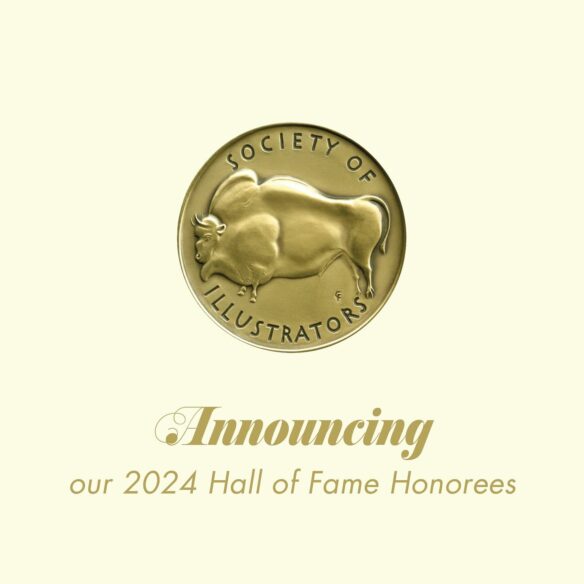
The Society of Illustrators has announced the 2024 inductees into their prestigious Hall of Fame. In recognition for their “distinguished achievement in the art of illustration” the artists are chosen based on their body of work and the significant impact it has made on the field of illustration as a whole. This year’s honorees are:
- Virginia Frances Sterrett [1900 – 1931]
- Robert Grossman [1940 – 2018]
- Gustave Doré [1832 – 1883]
- Yuko Shimizu [b. 1946]
- Gregory Manchess [b. 1955]
- Steve Brodner [b. 1954].
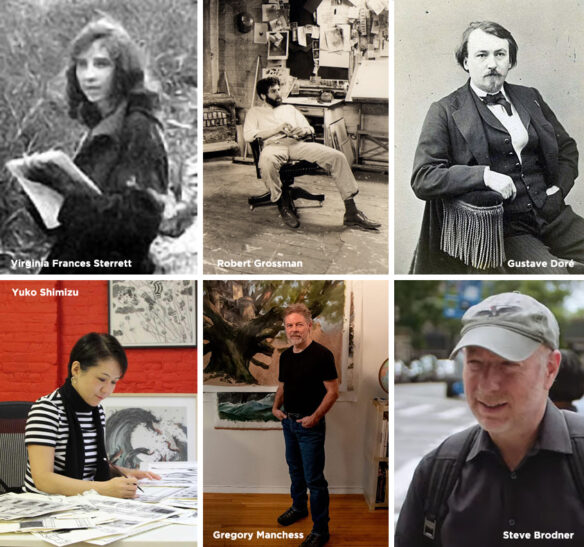
(2) LE GUIN PRIZE NOMINATION DEADLINE 4/30. There’s just one week left in the nomination period for the 2024 Ursula K. Le Guin Prize for Fiction. This $25,000 cash prize is awarded to a writer whose book reflects concepts and ideas central to Ursula’s work.
The recipient of this year’s prize will be chosen by authors Margaret Atwood, Omar El Akkad, Megan Giddings, Ken Liu, and Carmen Maria Machado.
Through April 30th, everyone is welcome to nominate books. Learn more about the prize, eligibility requirements, and the 2024 selection panel here.
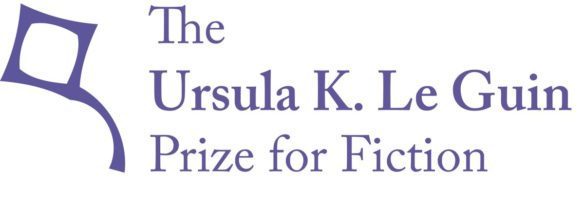
(3) MIÉVILLE REJECTS GERMAN FELLOWSHIP. China Miéville has rescinded his acceptance of a residency fellowship for literature for 2024 in Germany which he had been awarded by the Deutscher Akademischer Austauschdienst (German Academic Exchange Service) – DAAD. The full text is here: “Letter to the DAAD” at Salvage.
(4) A LITTLE TOO ON THE NOSE? [Item by Scott Edelman.] This year’s Met Gala theme will be “The Garden of Time,” a 1962 short story by J.G. Ballard. “Met Gala 2024: A Guide to the Theme, Hosts and How to Watch”. (Read the New York Times gift article courtesy of Scott Edelman.)
OK, what is the dress code?
It’s as potentially confusing as the exhibit. Guests have been instructed to dress for “The Garden of Time,” so named after a 1962 short story by J.G. Ballard about an aristocratic couple living in a walled estate with a magical garden while an encroaching mob threatens to end their peaceful existence. To keep the crowd at bay, the husband tries to turn back time by breaking off flower after flower, until there are no more blooms left. The mob arrives and ransacks the estate, and the two aristocrats turn to stone.
Just what comes to mind when you think “fashion,” right?
(5) BUTLER IS THEME OF LITFEST OPENING. LitFest in the Dena will hold its main program on May 4-5 at the Mt. View Mausoleum, 2300 N. Marengo Ave, in Altadena, CA. The opening event will be on May 3 – “Introduction and Keynote Presentation: In Conversation with Nikki High”, founder of Octavia’s Bookshelf.
Founder of Octavia’s Bookshelf, Nikki High will tell us about her discovery of books as an early reader and how authors of color helped her discover herself and what could become of her life. Featured in conversation with her friend Natalie Daily, librarian and literacy advocate at the Octavia E. Butler Magnet in Pasadena, Nikki talks about her bookstore as a community gathering place for book lovers who will find a treasure trove of BIPOC literature.
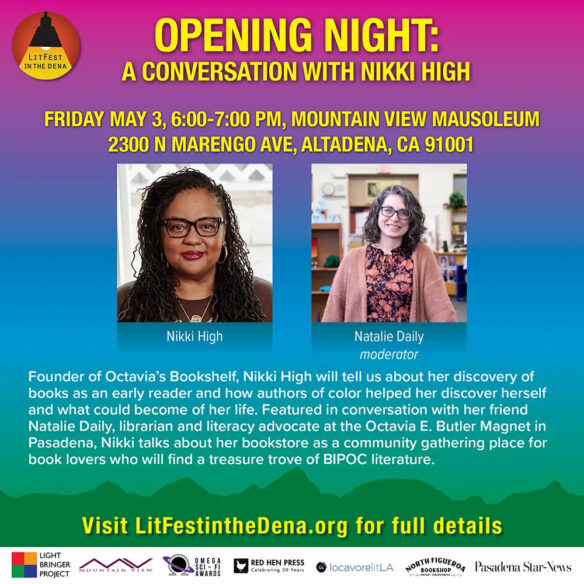
(6) O. HENRY 2024. Literary Hub takes care of “Announcing the Winners of the 2024 O. Henry Prize for Short Fiction”. Is there any sff on this list? I leave it up to you to identify it.
- Emma Binder — “Roy“, Gulf Coast
- Michele Mari — “The Soccer Balls of Mr. Kurz,” translated from the Italian by Brian Robert Moore, The New Yorker
- Brad Felver — “Orphans,” Subtropics
- Morris Collins — “The Home Visit,” Subtropics
- Jai Chakrabarti — “The Import,” Ploughshares
- Amber Caron — “Didi,” Electric Literature
- Francisco González — “Serranos,” McSweeney’s Quarterly Concern
- Caroline Kim — “Hiding Spot,” New England Review
- Katherine D. Stutzman — “Junior,” Harvard Review
- Juliana Leite — “My Good Friend,” translated from the Portuguese by Zoë Perry, The Paris Review
- Kate DiCamillo — “The Castle of Rose Tellin,” Harper’s Magazine
- Colin Barrett — “Rain,” Granta
- Robin Romm — “Marital Problems,” The Sewanee Review
- Allegra Goodman — “The Last Grownup,” The New Yorker
- Dave Eggers — “The Honor of Your Presence,” One Story
- E. K. Ota — “The Paper Artist,” Ploughshares
- Tom Crewe — “The Room-Service Waiter,” Granta
- Madeline ffitch — “Seeing Through Maps,” Harper’s Magazine
- Jess Walter — “The Dark,” Ploughshares
- Allegra Hyde — “Mobilization,” Story
(7) ANTI-LGBT HARASSMENT SAFETY ADVICE. “Drag Story Hour’s Jonathan Hamilt on Bomb Threats, Safety Tips” at Shelf Awareness.
Around the country, growing numbers of independent booksellers are finding themselves the targets of anti-LGBT harassment, with bomb threats proving to be an increasingly common tactic.
In recent weeks, Loyalty Bookstores in Washington, D.C., and Silver Spring, Md., Buffalo Street Books in Ithaca, N.Y., and Mosaics in Provo, Utah, have all been targets of bomb threats related to drag storytime programming. Sadly, they are not alone, and the numbers only continue to rise.
Per the nonprofit Drag Story Hour, there were nine documented incidents of bomb threats targeting official DSH events in 2023. In 2024, there have already been at least 12 such incidents, with the number growing almost every weekend.
DSH executive director Jonathan Hamilt noted that bomb threats represent only a small fraction of the harassment directed at LGBT communities and LGBT-inclusive gatherings. In 2023, there were more than 60 documented cases of harassment targeting DSH or adjacent programming; the figure more than doubles when including anti-drag incidents in general.
Hamilt called it “deeply disturbing” that adults are choosing to incite violence and intimidate children, parents, and storytellers at family-oriented events while claiming to want to protect children.
Despite what the public perception may be, Hamilt continued, Drag Story Hour is “not scrambling.” The organization is nearly 10 years old and its efforts are “very organized.” Anti-LGBT harassment is nothing new, though sometimes it takes different forms, and the organization is “working on getting through this.”
(8) ELLISON BACK IN PRINT. Inverse interviews J. Michael Straczynski for a piece titled “The Unexpected Resurrection of Harlan Ellison “. The interviewer’s portion is largely a rehearsal of decades-old Ellison controversies. (But by no means all of them.)
…As the title suggests, Greatest Hits is a kind of historical document. These are stories that don’t necessarily reflect where science fiction and fantasy are going but where the genre has been, as seen through the dark lenses of Harlan Ellison. Some of the stories (like “Shatterday”) hold up beautifully. Some, as Cassandra Khaw points out in her introduction, have problematic elements.
But unlike recent reissues of books by Roald Dahl or Ian Fleming, these stories remain uncensored. The fight against censorship was one of Ellison’s lifelong passions, and so, other than a few content warning labels in the book, the sex, sci-fi, and rock ’n’ roll of this writer’s vision remains intact and raucous. Like the punk rock of genre fiction, Ellison’s stories are as jarring and blistering as ever.
“No, no, you don’t touch Harlan’s stuff, man,” Straczynski says. “Even if he’s dead, he’ll come after you.”
(9) SPEAKING OUT. The New Mexico Press Women presented George R.R. Martin with its “Courageous Communicator Award” last month, which Martin found thought-provoking as he explains in “Women of the Press” at Not A Blog.
“On the Occasion of its 75th Anniversary Bestows its COURAGEOUS COMMUNICATOR AWARD on March 15-16, 2024 to George R.R. Martin for building new worlds and creating strong, yet nuanced, women characters in his books and television shows.”
…Our world needs courageous communicators more than ever in these dark divided days, when so many people would rather silence those they disagree with than engage them in debate and discussion. I deplore that… but had I really done enough, myself, to be recognized for courageous speech?
I am not sure I have, truth be told. Yes, I’ve spoken up from time to time, on issues both large and small… but not always. It is always easier to remain silent, to stay on the sidelines and let the storms wash over you. The more I pondered, the more convinced I became that I need to do more. That we all need to do more.
I started by delivering a 45 minute keynote address, on the subject of free speech and censorship. Which, I am happy to say, was very well received (I was not entirely sure it would be)….
(10) 2024 ROMCON AWARDS. [Item by SF Concatenation’s Jonathan Cowie.] Best Translation goes to an old Ian Watson title from 1973…
The Best Novella winner Silviu Genescu is noted for back in the 1990s winning the Romanian equivalent of “D is for End” (that’s the English translation but the play on words works in English as it does in the original Romanian). I remember staying with Silviu’s family back in the late 1990s when doing an Anglo-Romanian SF & Science Cultural Exchange, and their son came back from school to say that they had been learning about his father’s oeuvre that day in class….

(11) THE LONG WAY HOME. “’Furiosa’ has an action scene that took 78 days to film” – NME tells why.
The upcoming Mad Max prequel film Furiosa includes a 15-minute action scene that took 78 days to film, it has been revealed.
Speaking to Total Film Magazine, the film’s star Anya Taylor-Joy and George Miller’s production partner Doug Mitchell spoke about the scene, which Taylor-Joy says is “very important for understanding” the character of Furiosa better.
Mitchell revealed that the film includes a “has one 15-minute sequence which took us 78 days to shoot” and required close to 200 stunt workers on set daily. While little else has been revealed about the scene, it has been described as a “turning point” for Furiosa…
(12) TODAY’S BIRTHDAY.
[Written by Cat Eldridge.]
Born April 23, 1973 — Naomi Kritzer, 51. Naomi Kritzer’s CatNet at this point consists of “Cat Pictures Please” which won a Hugo at MidAmeriCon II, Chaos on CatNet and Catfishing on CatNet. As one who likes this series enough that I had her personally autograph the Cat Pictures Please and Other Stories collection, I wanted to know the origin of CatNet, so I asked. Well, I also gifted her with a birthday chocolate treat, sea salt dark chocolate truffles. Here’s her answers:
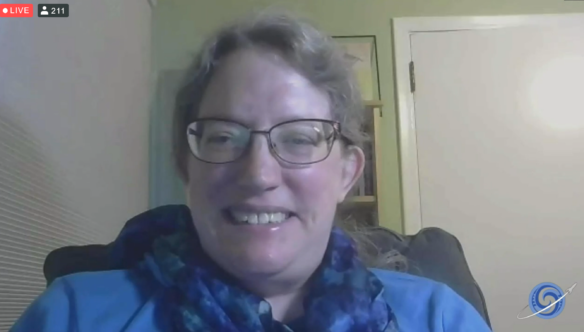
Naomi Kritzer: The original short story was basically the collision of two things:
1. The line, “the Internet loves cat pictures,” which made me imagine a central internet-based intelligence that wanted pictures of cats.
2. Getting myself a smartphone for the first time (I was a late adopter), and discovering some of its quirks, and coming up with anthropomorphic explanations for things like bad directions.
I mean, the Internet clearly does love cat pictures — although “the Internet” is “the billions of people who use the Internet,” not a secret sentient AI, though!
Cat Eldridge: I went on to ask her how CatNet came to be…
Naomi Kritzer: Do you mean in the story, how it got created? I was very vague about it in the short story but sort of heavily implied it was the result of something someone did at Google. In the novel CatNet was an experimental project from a company that was again, heavily implied to be Google.
Way, way cool in my opinion.
While putting this Birthday together, I noticed that she had two other series from when she was starting out as a writer, so I asked her to talk about them. Both are available on Kindle.
Cat Eldridge: Let’s talk about your first series, Eliana’s Song.
Naomi Kritzer: Eliana’s Song is my first novel, split into two pieces. I rewrote it really heavily multiple times, and each time I tried to make it shorter and it got longer. When Bantam bought it, they suggested that I split it into two books and expand each, which is what I did.
The book actually started out as a short story I wrote while in college. It garnered a number of rejections that said something like, “this isn’t bad, but it kind of reads like chapters 1 and 36 of a novel.” I eventually decided to write the novel, and struggled for a while before realizing I could not literally use the short story as Chapter 1, I had to start over writing from scratch.
Cat Eldridge: And your second series, Dead Rivers.
Naomi Kritzer: Sometime around 2010 I picked up the Scott Westerfield Uglies series and really loved it. Uglies in particular followed a plotline that I really loved, in which someone is sent to infiltrate the enemy side, only to realize once she’s there that these are her people, far more than her bosses are. But she came among them under false pretenses, and she’d have to come clean! And she almost comes clean, doesn’t, of course is discovered and cast out, and and then has to spend the next book (maybe the next two) demonstrating her worthiness to be allowed to come back. I read this series and thought, “dang, I love this plot — I loved this plot as a kid, and reading it now is like re-visiting an amusement park ride you loved when you were 10 and finding out that even when you know where all the turns and drops are, it’s still super fun.” Like two days after that I suddenly remembered that I had literally written that plotline. It’s the plotline of the Dead Rivers trilogy. I really really love this plot, it turns out! So much that I’ve written it!
I’m not sure how well it’s aged. We were not doing trigger warnings on books yet when it came out, and the fact that the book has an explicit and fairly vivid rape scene took a lot of readers by surprise. It’s also a story that’s very much about whether someone can start out a bad guy and work their way to redemption.
Cat Eldridge: Now unto your short stories. I obviously believe everyone should read “Cat Pictures Please” and Little Free Library”, both of which I enjoyed immensely. So what of your short story writing do you think is essential for readers to start with?
Naomi Kritzer: That is a good question but one I find very hard to answer about my own work! It’s a “can’t see the forest because of all the trees” problem, I think.
“So Much Cooking” would probably be at the top, though (with the explanatory note that I always attach these days — I wrote this in 2015.) And then probably “Scrap Dragon” and “The Thing About Ghost Stories.”
To date, she has two short story collections, Gift of the Winter King and Other Stories which is only available as an epub, and of course Cat Pictures Please and Other Stories which is also available in trade paper edition.
(13) COMICS SECTION.
- The Far Side knows how TV is written.
- The Far Side shares an entry from its “Ground Control to Major Zooky” collection.
- Phoebe and Her Unicorn crosses genres.
- Reality Check introduces the superhero nobody wants.
(14) A MONOPOLY OF WHAT? Ellie Griffin concludes “No one buys books” at The Elysian.
In 2022, Penguin Random House wanted to buy Simon & Schuster. The two publishing houses made up 37 percent and 11 percent of the market share, according to the filing, and combined they would have condensed the Big Five publishing houses into the Big Four. But the government intervened and brought an antitrust case against Penguin to determine whether that would create a monopoly.
The judge ultimately ruled that the merger would create a monopoly and blocked the $2.2 billion purchase. But during the trial, the head of every major publishing house and literary agency got up on the stand to speak about the publishing industry and give numbers, giving us an eye-opening account of the industry from the inside. All of the transcripts from the trial were compiled into a book called The Trial. It took me a year to read, but I’ve finally summarized my findings and pulled out all the compelling highlights.
I think I can sum up what I’ve learned like this: The Big Five publishing houses spend most of their money on book advances for big celebrities like Brittany Spears and franchise authors like James Patterson and this is the bulk of their business. They also sell a lot of Bibles, repeat best sellers like Lord of the Rings, and children’s books like The Very Hungry Caterpillar. These two market categories (celebrity books and repeat bestsellers from the backlist) make up the entirety of the publishing industry and even fund their vanity project: publishing all the rest of the books we think about when we think about book publishing (which make no money at all and typically sell less than 1,000 copies).
But let’s dig into everything they said in detail….
(15) I WALK TO THE TREES. [Item by Steven French.] If anyone fancies a walk through some weird woods … “12 Forests That Offer Chills and Thrills” at Atlas Obscura.
…While Translyvania, Romania, brings to mind images of Dracula and his imposing castle, the Hoia Baciu Forest might be more reliably scary. Known as the “Bermuda Triangle of Romania,” the forest has been home to UFO sightings, glowing eyes, strange disappearances, in addition to trees that look like they were plucked from the Upside Down. In the busy residential section of Ichikawa, Japan, is a small, seemingly out-of-place wooded area. It’s been said that those who choose to enter the Yawata no Yabushirazu are whisked away, never to be seen again. Entrance is strictly forbidden. From a woodland in the shadows of England’s “most haunted village” to a tree in a Michigan forest said to be possessed by spirits, here are our favorite spine-tingling forests…
(16) KITTY LITERATURE. “A survey of feeding practices and use of food puzzles in owners of domestic cats – Mikel Delgado, Melissa J Bain, CA Tony Buffington, 2020” at Sage Journals. (Downloadable as a PDF.)
…Environmental enrichment (although without a single, agreed-upon, definition) generally refers to the addition of activities, objects or companionship to optimize physical and psychological states and improve an animal’s welfare.1–3 Appropriate enrichment encourages species-typical behaviors,1 and may improve welfare by providing an individual a greater perception of control and choice in their environment,4 and reducing their perception of threat.5 Because all non-domesticated animals must forage for food, whether by hunting, scavenging or searching, interventions that encourage foraging behavior are commonly implemented for zoo and laboratory animals.
Previous studies of companion animals have demonstrated positive effects of foraging toys on behavior. Shelter dogs that were provided with a Kong toy stuffed with frozen food in addition to reinforcement-based training were calmer, quieter and showed less jumping behavior when meeting potential adopters.6 Shelter parrots that engaged in feather-picking spent more time foraging and showed improved feather condition when provided with a food puzzle.7 Case studies suggest positive effects of food puzzles on the behavior of cats such as weight loss and resolution of inter-cat aggression and other behavioral concerns,8 even though a recent study found that food puzzles may not increase overall activity levels in house cats.9 Despite potential benefits, a recent survey found that less than 5% of Portuguese cat owners attending a veterinary practice provided food puzzles for their cats or hid food around the home to stimulate foraging behavior.10…
TEDDY HARVIA CARTOON.
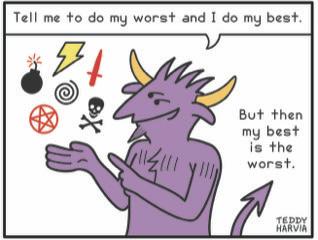
[Thanks to SF Concatenation’s Jonathan Cowie, Steven French, Teddy Harvia, Hampus Eckerman, Arnie Fenner, Kathy Sullivan, Scott Edelman, Mike Kennedy, Andrew Porter, John King Tarpinian, Chris Barkley, and Cat Eldridge for some of these stories. Title credit belongs to File 770 contributing editor of the day Dan’l.]
